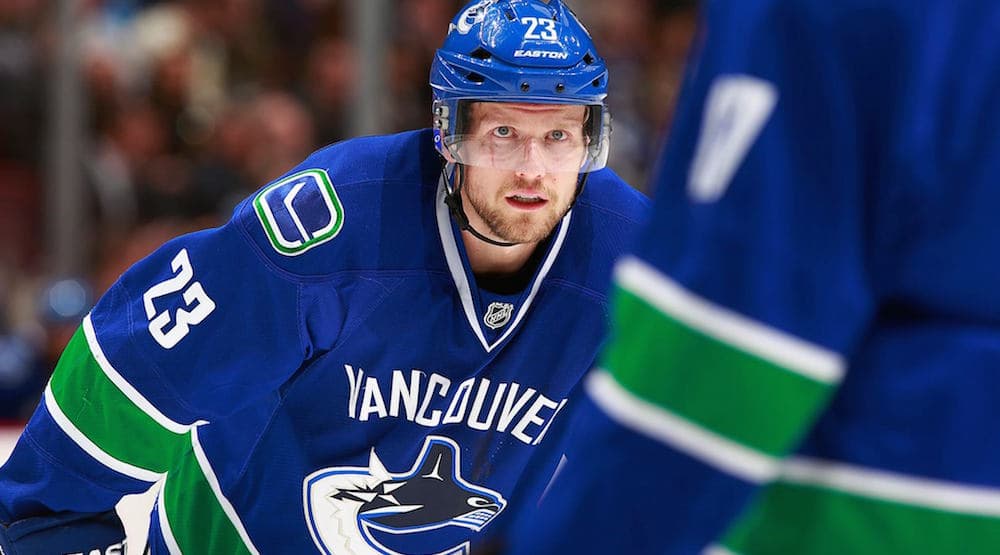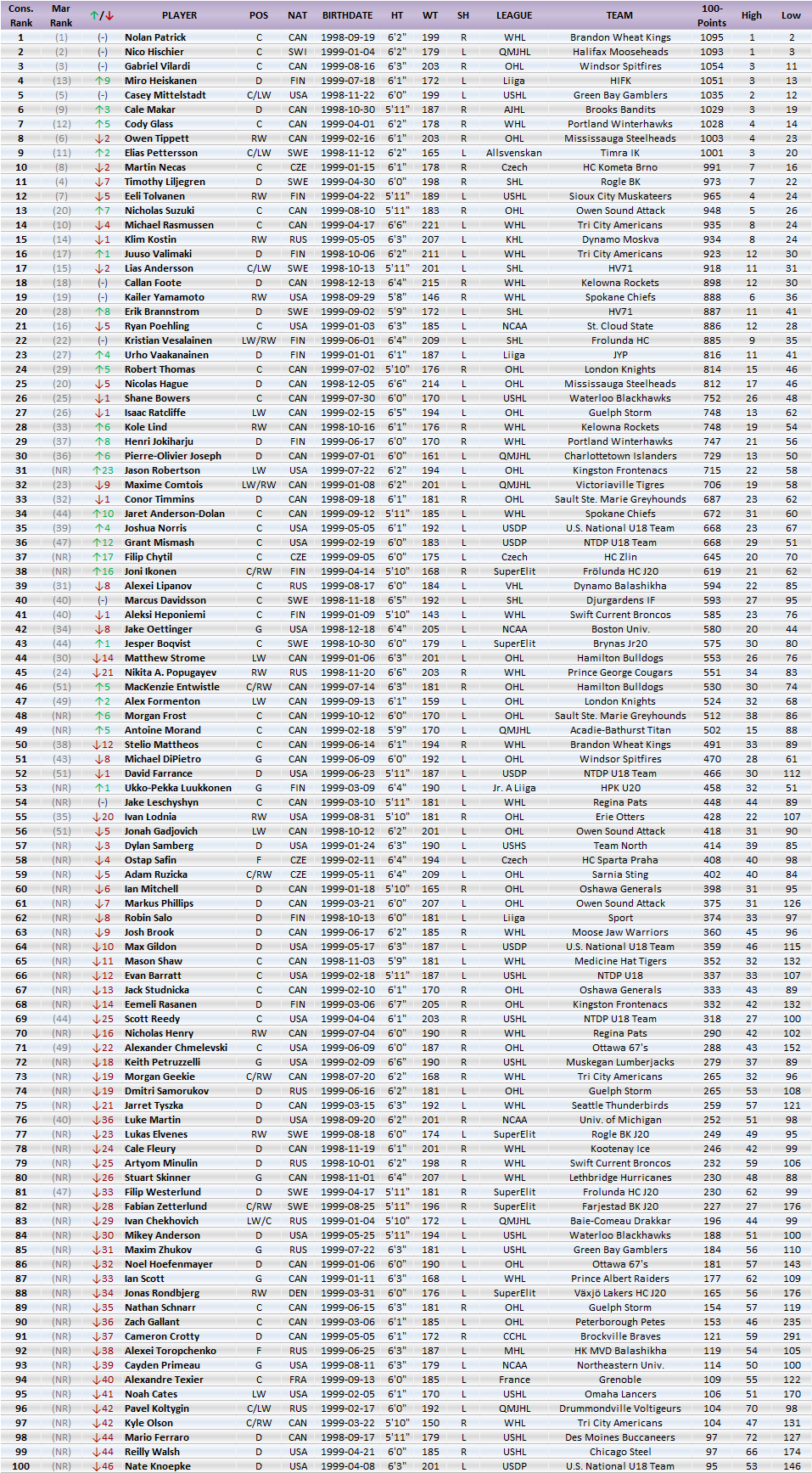The Flying Take: The Edler Dilemma, Revisionist History, and Why Isn’t Anyone Talking About Kole Lind?

5 years ago
Alex Edler is quietly on pace for his best offensive season in seven years, and yes, that’s even accounting for the fact that he missed 15 games.
It can easily get lost in a season like this one when the young players are outperforming expectations, but after a resurgence last year on the power play and a hot start this season, he appears to have found his offensive game again. It’s a welcome development to be sure, but one that may present a dilemma for the Canucks in the near future. That dilemma is something John Shannon alluded to during a radio hit on Sportsnet 650 earlier this week:
While the offensive numbers look as good as they ever have, Edler’s underlying shot-based metrics and overall two-way profile has been steadily declining for the past three seasons. He’s been able to stave off a steep age-related decline in play so far, but it’s coming.
Given where the Canucks are at in their rebuild and their need to overhaul the defense, the obvious thing to do would be to flip Edler at the deadline. Playoff teams are always looking to add a top-four defender and are usually willing to pay a hefty price for the opportunity.
The fact that Edler has no desire to waive his no-trade clause is Vancouver’s worst-kept secret, and while this is something we’ve heard many times about players who were eventually moved anyway, the truth is that he may refuse a trade and there isn’t much anyone can do about it. It would be another example of failure to get full value for what should have been a highly-coveted asset, but the current regime didn’t sign that contract and so it’s tough to hold them to account for it.
Perhaps the most pertinent matter, then, is what to do with him at the end of the season when his contract expires. With the way he’s played in the last two years, he’ll have earned a multi-year deal with a big pricetag. And Even if he takes a sweetheart deal, there’s the question of making room for the team’s young defenders. It would be a mistake to move on from Ben Hutton after the year he’s had, and even the most conservative projections have Quinn Hughes making the squad in 2019-20. Olli Juolevi’s injury has set him back a year, but considering the expectation leading up to his injury was for him to get some games this season, he’s still a part of the team’s near future. How much longer can the Canucks afford to have their entire left side locked up long-term?
1. The truly scary thing about that John Shannon quote isn’t the revelations about Edler. It’s that ownership is going to “push hard” for the GM to make the playoffs. Sure, you can always hope the team makes the post-season, but “pushing” implies not only holding on to the assets you already have, but possibly acquiring some additional ones as well. With the way they’ve handled some of their contracts, there’s a case to be made they’ve already sacrificed a bit of their long-term outlook for increased success now. Can you imagine what things will look like if the mandate from above is explicitly to win now?
2. The league announced yesterday that Erik Karlsson would be suspended two games for his hit to the head of L.A. Kings forward Austin Wagner.
For those of you that haven’t seen it:
Let’s compare that to the Danick Martel hit on Troy Stecher from the other night.
The two hits have a few things in common. They both targeted the head, and both involve players who sound like their names were made up on the spot. But what are the differences?
Well, one guy saw the hit coming and the other didn’t.
And one received a two-game suspension. The other got a two-minute interference penalty.
3. There were some familiar faces in the press box on Tuesday night when the Canucks faced off against the Lightning. CanucksArmy managing editor Ryan Biech and contributors Jeremy Davis, Harman Dayal, and Darryl Keeping were all spotted in press row by Patrick Johnston, reporter for the province and CA alumnus. Given the team’s prior hostility to online-only media outlets, their appearance turned a few heads. All four played coy about their reasons for being there, but according to Jason Botchford it was more than just a random visit:
“The Canucks wanted to reach out to some of the main analytics guys in the city to try to start having connections with those guys…they were all at the game to meet with the Canucks analytics crew. That was pretty neat. I think that the relationship between the Canucks and that component of the market that analyzes and follow the team…I thought that connection was cool because it hasn’t always been that relationship between the people who do analytics for the Canucks and the people that do it for the Athletic and CanucksArmy.”*
If it is indeed the case that the team is reaching out to some of the top analytical minds covering the team, it’s a welcome development. The Canucks’ front office has been more open to incorporating data into their decision making in recent years, and this looks like another step in the right direction. I would imagine the decision to hold the meet-and-greet had a lot to do with Canucks’ Senior Director of Hockey Operations and Analytics Jonathan Wall. Wall has a longstanding relationship with the hockey blogosphere in Vancouver, appearing at the Canucks-sponsored Vancouver Hockey Analytics Conference in 2017 and 2018.
4. The crown jewel of the Canucks’ data-driven decision making would appear to be the 2017 draft, when they leaned on the numbers to draft Petrus Palmu in the sixth round as well as selecting a few pGPS favourites in Elias Pettersson, Kole Lind, and Jonah Gadjovich.
Those players have had mixed results at the pro level so far. Pettersson has obviously exceeded the expectations of even his biggest supporters and insured the draft will be viewed as a success regardless of what happens to the other seven players who were selected; but the other three have struggled to find their way in the AHL. Petrus Palmu made headlines last week when he elected to returned to Finland rather than play out the remainder of the AHL season. Palmu’s struggles to get in the lineup. get consistent minutes, and contribute have been well-publicized this season, but the story’s been very much the same for Kole Lind and Jonah Gadjovich. They’ve combined for just 6 points on the season and have also sat in the press box on a few occasions.
The Comets aren’t without their success stories – the development of Zack MacEwen, Lukas Jasek, and Olli Juolevi prior to his injury has been laudable- but the trio of rookies’ struggles this season does call into question the relationship between the Comets and the Canucks’ front office. The limited ice-time and healthy scratches may very well be warranted, but these players are by no means required to play in the minors this year. Palmu understandably made the decision to return to Finland, while plenty of players of Lind and Gadjovich’s age return for another season of junior hockey.
It’s not just on Utica to do do the whims of its parent club. They have a business to run, too. But if these players simply weren’t ready or either organization had an inkling they’d struggle to play on a consistent basis, that’s something that ought to have been foreseen and accounted for.
5. All that having been said, it’s fair to wonder what exactly happened to Kole Lind.

Sure, it’s probably just a slow start. The AHL is a tough league, especially for a rookie, and doubly so for one who’s struggled with injury.
Still, it’s hard not to see it as a disappointment. There’s an alternate universe where Kole Lind is selected just a few spots higher, in the first round, and is considered a potential sleeper to make the NHL in 2018 after a stellar season in the WHL.
Instead, he’s riding the pine in Utica and has two points on the season. It makes you wonder.
It hasn’t come close to be a story this year, either. Don’t let anyone tell you Vancouver is too negative.
6. With the way the team has played over the past few games, it comes as a surprise that so much time online has been devoted to dissecting alternate histories.
There are a few problems with this line of thinking. The first is that it lets management off the hook for their mistakes. No matter how you slice it, it’s never a good thing to whiff on a top-5 pick, regardless of whether or not it put you in a good position at the following draft.
More importantly, Tkachuk wasn’t having that kind of rookie season with the Vancouver Canucks. If the Canucks pick him, there’s almost no way he plays the next year, and even if he does, there’s no way he gets the opportunities he got in Calgary under Willie Desjardins. And finally, even if Tkachuk did improve their fortunes enough to move down in the draft, they likely still could have had Pettersson anyway.
7. That brings us to our second bit of revisionist history.
Why do people keep asking how Pettersson fell to fifth? There’s a pretty simple, obvious answer there for anyone who was paying attention at the time.
There was never any chance Pettersson was going higher than where the Canucks picked him. Here’s where he was ranked by some of the most notable draft publications in the spring of 2017:
| Player | Bob McKenzie | THN | Corey Pronman | Craig Button | Steve Kourianos | Dobber Prospects | Hockey Prospect | ISS | McKeen’s | Future Considerations | Jeff Marek |
| Elias Pettersson | 7th | 9th | 17th | 8th | 7th | 8th | 5th | 20th | 11th | 8th | 15th |
In Jeremy Davis Consolidated Rankings of the scouting community for 2018, Elias Pettersson came in as the ninth-best prospect.

A few publications, including CanucksArmy, were wise to what Pettersson was capable of, but none had him going higher than where the Canucks picked him.
The selection was considered a reach at the time. Based on industry consensus, the Canucks swung for the fences. It was the kind of brass-balls move you rarely see from any front office, let alone the quiet and conservative Jim Benning.
And it paid off.
*Edited and condensed for clarity





